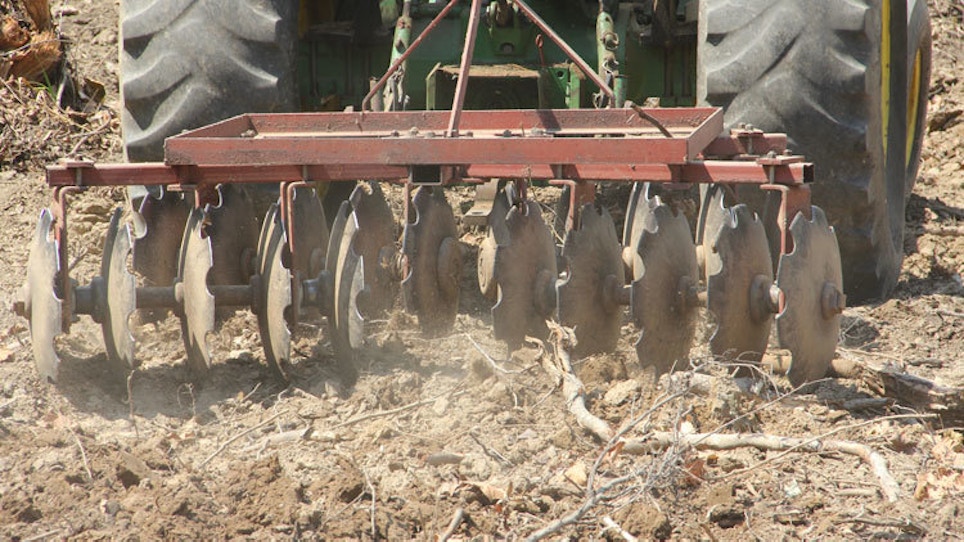Can a food plotter catch a break these days? It seems like every year brings a new and unexpected challenge. These days, however, there seems to be a common theme throughout much of whitetail country: Drought.
Some regions have been in the grip of an epic drought for years, while others have been experiencing mild or severe drought off and on for the past decade. Blame it on a streak of bad luck, an act of God or global warming, but one thing is certain — dry weather seems to be the new normal in some areas. Long periods of hot, dry weather spell disaster to a food plot.
The bad news is there isn’t much we can do about it, at least not when it comes to providing vital water to our food plots. We could dig a well and water our plots, of course, but that would require electricity to run the well pump, not to mention the sheer cost of such an undertaking. Do we really want to spend thousands of dollars to grow a few food plots?
The good news is that it will rain. Eventually. In the meantime, you’ll have to work around the dry weather and make smart choices. You can grow a food plot when it’s dry. Just be realistic.
Site Selection
Arguably, no factor plays a larger role in food plot success than choosing the proper site. It needs to have adequate sunlight, of course. Most food plot plants require at least four hours of direct sunlight per day.
What’s more important, drought or no drought, is the soil type, which is directly related to the site you select. Whitetail Institute Vice-President Steve Scott says well-drained soil is a poor choice if you are in a drought-prone area. It won’t hold moisture for long. It will, however, hold enough moisture during normal weather conditions for deep-rooted plants to survive.
“Bottomland soil is usually very good because it’s typically heavier and it holds moisture really well, but plenty of other locations can have adequate soil, as well,” he said.
Scott says food plotters should always choose the best site with the most appropriate soil type, drought or no drought. He’s convinced that hunters who base their food plot decisions around potential weather patterns might be doing themselves a disservice.
“Where I live, we have as many really wet years as dry years, so to me it seems kind of pointless to plan a food plot around something that might or might not happen,” he says.
Related: 5 steps for easy, DIY food plot success
Seed Selection

Choose fast-growing seeds like oats and wheat if dry weather is preventing you from planting other seeds. Both types of plants will grow even in cooler temperatures.
Droughts happen and even Scott admits it’s better to be prepared than not. That’s why it’s not a bad idea to choose your plot plants wisely.
Some plants do withstand dry periods and drier soil better than others, although no food plot plant will survive a prolonged spell of extreme hot, dry weather. A searing sun will not only wilt your plants, but it will also bake the soil and rob it of any remaining moisture. That’s often a death sentence.
However, some plants are capable of surviving a drought if they are already established. Chicory and alfalfa, for example, have deeper roots than other perennials like clover. They will likely go dormant during a drought, but there’s a good chance they’ll spring back when they get cooler temperatures and some moisture.
Annuals like turnips and other brassicas send a tap root deep into the ground, soaking up what moisture remains. Shallow-rooted plants like clover, on the other hand, might succumb to the dry weather. They might not perish, but they will go dormant and might be ignored by your deer herd.
“I’ve seen clover come back real well. It looks like it’s dead, but if it’s planted in the right location and it was in good shape going into the drought, it should come back once it gets some rain,” says Scott.
Of course, many annuals are planted in the late summer or early fall. That’s when afternoon thunderstorms or even prolonged rain events and cooler weather are more likely to occur. Perennials are most affected by dry weather. Spring-planted annuals are also at risk.
Related: How to understand herbicides
Bite The Dust
Even if there’s no rain in the forecast, you might have to plant anyway, even if the soil is packed and dry. Fall-planted seeds have a relatively short window. Wait too long and they might not have enough time to mature.
“We call it dusting it in,” says Scott. “That means you essentially follow the same steps as you would otherwise, but you’ll be planting your seed in dust instead of moist soil. That’s kind of a last-ditch effort to get something planted in the hopes that it will rain soon.”
Planting in powder-dry dirt might be your only choice. Put the seed down and then pray for rain. Be warned, though. A single afternoon shower might only kill your seeds. The quick dose of moisture will help the seeds sprout, but if it gets hot and dry again, your plots will likely fail. Watch the weather and be ready to plant when conditions are right.
If the planting window is shrinking, it might be wise to change your seed choice. Some plants, perennials like clover and chicory in particular, develop their roots before they put energy into growing leaves. That means your plants might not mature enough before winter sets in. They’ll definitely go dormant, but a severe winter might actually kill the plants if they aren’t established.
Some annuals take longer to mature. Turnips and radishes need extra time to grow their tubers and develop a full, mature leaf system. Plant them too late and your deer will have little to eat.
“If you are running out of time, consider a fast-growing annual like Imperial Whitetail Oats Plus or our No Plow,” says Scott. “They need some moisture to germinate, but once they get it, they grow fast and the deer will start eating the plants a lot faster than they will eat some other varieties.”
Related: Plant professional food plots every time
Give Them A Helping Hand
There’s no guarantee any plant will survive, but they stand a better chance if they are as healthy as possible. That means you’ll need to provide them with the right soil pH and the right level of nitrogen, phosphorous and potassium before severe weather strikes. By maintaining healthy, vibrant food plots, you automatically give them a higher chance of surviving the most extreme conditions. They’ll have stronger, deeper roots and healthier, thicker leaves, which help protect the soil’s moisture by shading it.
There’s no better way to properly amend the soil than by conducting a soil test from a professional lab and then following the recommendations. It doesn’t matter if it’s a new plot or an existing perennial plot. Nutrients will deplete over time. A soil test can tell you if you need to add any.
Preventing excess weed growth can also help your plots survive a dry spell. Weeds not only take up space, nutrients and sunlight, but they also steal moisture. Make sure you control weeds before it gets dry. Spraying food plots with herbicides during a drought might actually harm the good plants and it might not control the bad ones.
Above all, don’t try to fool Mother Nature. It won’t work, insists Scott. “Control what you can,” he says, “and don’t worry about the things you can’t.”






